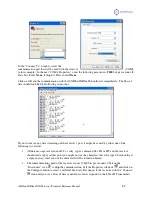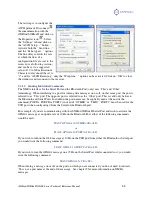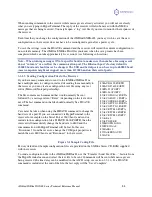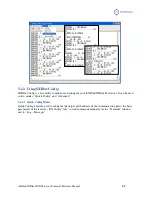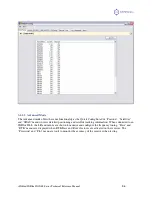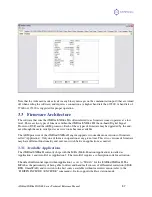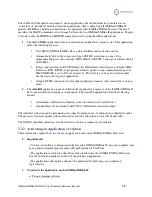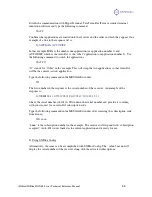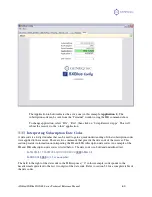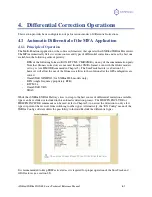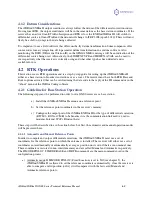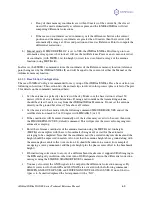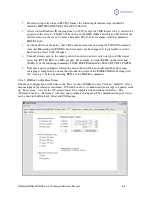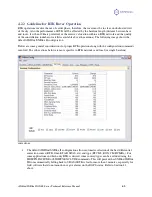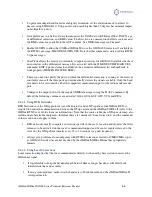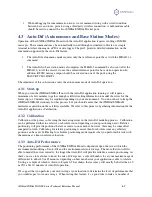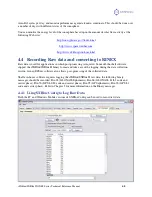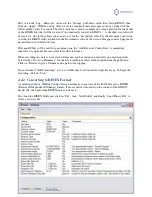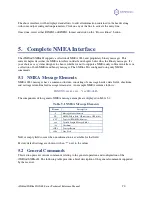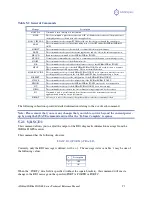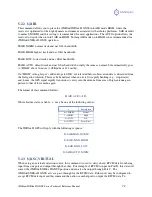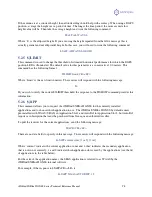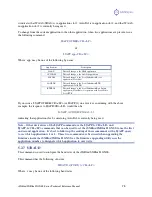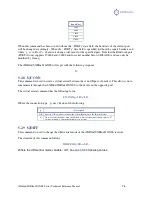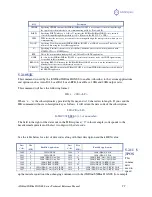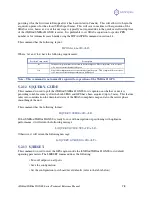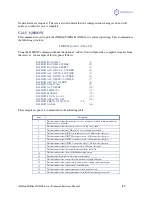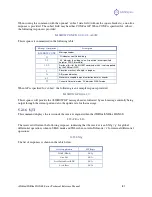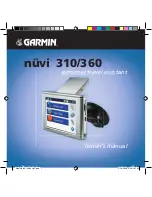
iSXblue/SXBlue II GNSS Series Technical Reference Manual
66
•
To prevent multipath and for faster ambiguity resolution, set the elevation mask to at least 10
degrees using $JMASK,10. Using an elevation mask higher than 15 degrees has minimal impact
on multipath rejection.
•
Give preference to a field software that monitors the DGPS status (RTK fixed/float, DGPS), age
of differential correction, and RMS values. The first two are contained in the GGA sentence and
the RMS values are available in the GST sentence. See NMEA messages in Chapter 5.
•
Enable GLOFIX to allow the iSXBlue/SXBlue II to use the GLONASS correctors if available in
the RTCM 3 message: $JMODE,GLOFIX,YES. Note that this command is only used for RTCM
3 type messages.
•
SureTrack allows the receiver to internally compute correctors for GLONASS satellites that have
no correctors in the differential message. It is activated with the $JMODE,SURETRACK,YES
command. EDIF type must remain included in the automatic differential list for SureTrack to
work properly ($JDIFFX,INCLUDE,EDIF).
•
There is no need to specify the port on which the differential correction is coming as the receiver
constantly scans all the three ports and automatically detects the signals available. Only the baud
rate needs to be set to match either the computer communication port or the radio modem serial
port.
•
Configure the output port with the required NMEA messages using the $JASC command. By
default the following sentences are activated: GGA, GSA, GST, GSV, VTG and ZDA.
4.2.2.1
Using RTK Networks
RTK Networks use the NTrip protocol (over the Internet) and an NTrip client, like SXBlue RTN, is
required to handle the communication between the NTrip caster and the iSXBlue/SXBlue II (refer to the
SXBlue RTN User’s Guide for more information). Note that the source table of an NTrip caster may also
include single baseline mountpoints, therefore these are considered “Local correction” and the comments
in this section do not apply to them.
•
RTK networks usually compute a correction specific to the user’s location and requires the GGA
sentence to be activated on the rover’s communication port and be sent at regular interval to the
server by the NTrip client (usually every 15 to 30 seconds is a good frequency).
•
Always give preference to mountpoints with RTCM3 corrections instead of CMR/CMR+ types,
as GLONASS correctors are not decoded by the iSXBlue/SXBlue II from these proprietary
formats.
4.2.2.2
Using Local Corrections
Local correction implies that the rover communicates directly with a nearby base station to receive the
differential signal.
•
It is preferable to keep the baseline length below 20km as longer baselines will affect both
initialisation time and accuracy
•
If using radio modems, make sure the baud rates of both the radio and the iSXBlue/SXBlue II
serial port match.

